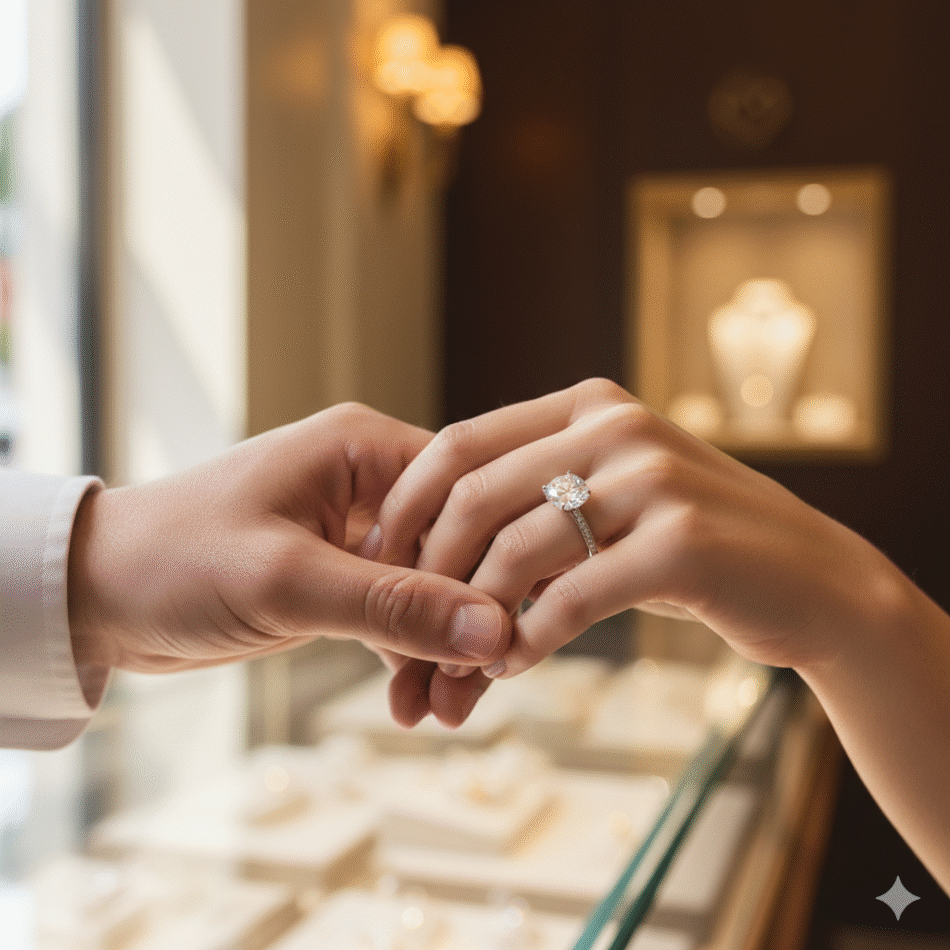Introduction: Why Lab Grown Diamonds Spark So Much Debate
When Priya and Arjun started shopping for their engagement ring, they faced a dilemma — go with a traditional mined diamond or explore a lab grown diamond ring. After weeks of research, they chose a lab-grown one — same sparkle, same durability, but nearly half the price.
If you’ve ever wondered “Are lab grown diamonds real?” you’re not alone. This question has sparked conversations in jewelry stores and social media alike. With lab grown diamond sales rising by 20% in 2024, according to Gemological Institute data, it’s clear they’re no longer a niche choice.
In this article, we’ll cut through the myths and uncover the real truth behind lab grown diamonds — what they are, how they’re made, and whether they’re worth your love and money.
What Makes a Diamond “Real”? The Basics
A diamond — whether mined from the earth or created in a lab — is a crystal made of pure carbon formed under extreme heat and pressure.
-
Natural diamonds are formed deep within the Earth over billions of years.
-
Lab grown diamonds are created using advanced technology that replicates the same natural conditions — just in weeks instead of eons.
Both are chemically, physically, and optically identical, scoring 10 on the Mohs hardness scale, the highest measure of durability.
Simply put: if it’s carbon crystalized under pressure, it’s real.
Key Properties of Authentic Diamonds
✨ Clarity & Cut:
Lab grown diamonds are graded by the same standards as mined ones — from Flawless (FL) to Included (I). The cut determines brilliance, and lab diamonds rival the best natural cuts.
🎨 Color:
Both follow the same color grading scale, from D (colorless) to Z (light yellow) — no difference in evaluation.
📜 Certification:
Always look for GIA or IGI certificates, which verify quality, origin, and authenticity.
Common Myths About Lab Diamonds
❌ Myth 1: They’re fake or just glass.
✅ Fact: Lab grown diamonds have the exact same chemical composition — pure carbon — as mined diamonds.
❌ Myth 2: They have no resale value.
✅ Fact: According to 2025 jewelry industry reports, certified lab grown diamonds retain up to 70% of their value, a number that continues to rise as the market matures.
How Lab Grown Diamonds Are Made: The Science Simplified
Creating a lab diamond isn’t magic — it’s pure science.
Two main technologies are used:
-
HPHT (High Pressure High Temperature)
-
CVD (Chemical Vapor Deposition)
Both mimic the Earth’s diamond-forming environment but in a controlled lab. The result? A flawless diamond formed in just 4–6 weeks, reducing costs by 40–50% compared to mined stones.
Step-by-Step Creation Process
-
A tiny diamond seed is placed inside a growth chamber.
-
Scientists apply extreme heat (around 1,500°C) and pressure.
-
Carbon atoms bond layer by layer, growing the crystal until it reaches the desired size.
-
The rough diamond is then cut and polished just like any natural diamond.
Real-World Factory Insights
During a visit to Lightbox Jewelry’s advanced lab, the production process was described as “ethical luxury in action.”
💬 “Lab grown diamonds are identical to mined ones under a microscope,” explains Dr. Jane Ellis, a certified gemologist.
Pros and Cons: Weighing Lab Grown vs. Mined Diamonds
| Factor | Lab Grown Diamonds | Mined Diamonds |
|---|---|---|
| Average Price (1 ct) | $2,000 | $5,000 |
| Environmental Impact | Uses 100x less water | Heavy mining footprint |
| Ethical Sourcing | Conflict-free, traceable | Risk of unethical mining |
| Popularity (2024) | 1 in 3 couples choose them | Declining preference |
Top Advantages of Choosing Lab Grown
💎 Affordability: Save thousands and upgrade size or clarity.
🌿 Eco-Friendly: Reduce carbon footprint by up to 90%.
🤝 Ethical Choice: 100% traceable from lab to your ring finger.
Potential Drawbacks to Consider
⚖️ The resale market is still developing.
💭 Some buyers prefer the emotional value of something naturally rare.
💡 Tip: Always buy IGI or GIA-certified pieces to ensure authenticity and resale protection.
Expert Views and Real Stories: What Buyers Say
💬 “Clients love the sparkle without the guilt,” says Alex Rivera, a luxury ring designer in Los Angeles.
In 2024, 1 in 3 U.S. couples opted for lab grown diamonds — a massive rise from just 10% in 2020.
💍 Case Study:
A New York bride, Emma, saved $3,000 on her engagement ring. “It looks stunning, and knowing it’s ethically made makes it even more special,” she says.
Conclusion: Make Your Choice with Confidence
Lab grown diamond rings are 100% real diamonds — just created with innovation instead of excavation.
They shine with the same brilliance, last forever, and align with modern values of sustainability and ethics.









